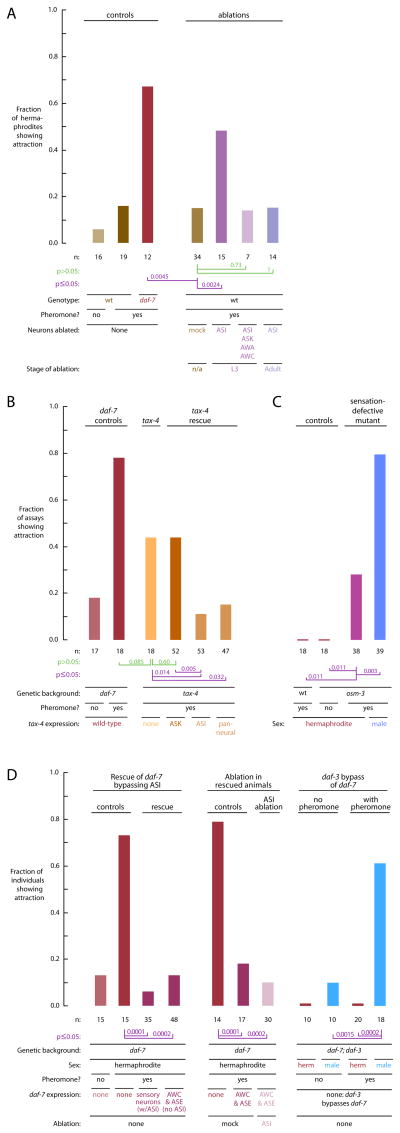Figure 2. ASI sensory activity is required to repress attraction in hermaphrodites, but the ASIs are bypassed by restoring DAF-7-signaling function elsewhere.
A. ASI is required for repression of attraction. Ablation of ASI neurons reveals sexual attraction behavior in wild-type hermaphrodites. When ASI neurons are ablated during the L3 larval stage, hermaphrodites exhibit attraction behavior comparable to daf 7 hermaphrodites, and significantly different from mock-ablated animals. Attraction in the absence of ASI requires the ASK, AWA, and AWC sensory neurons, because animals missing all eight neurons have significantly impaired sexual attraction behavior. The ASI neurons must be ablated during development to reveal sexual attraction behavior, because when the ASI neurons are ablated in adult animals, sexual attraction behavior remains repressed.
B. The TAX-4 cGMP-gated channel is required in ASI to repress sexual attraction. tax-4 mutant hermaphrodites show sexual attraction behavior comparable to daf-7 hermaphrodites. Expression of tax-4 in the ASI neurons, but not in ASK, restores full repression of attraction behavior.
C. Sensory cilia must be intact to repress sexual attraction in hermaphrodites. osm-3 mutants have impaired sensory cilia in a subset of sensory neurons that includes the ASIs (Snow et al., 2004; Signor et al., 1999); osm-3 mutant hermaphrodites have significant sexual attraction behavior compared to either wild-type hermaphrodites or to no-pheromone osm-3 controls.
D. Restoring DAF-7/TGF-β signaling function elsewhere bypasses ASI. Transgenic expression of DAF-7/TGF-β in the AWC and ASE neurons restores repression of sexual attraction in daf-7 mutant hermaphrodites. Restored repression is not ASI-dependent, because ablation of ASI during the L3 larval stage in transgenic animals does not significantly affect repression. Repression of attraction is restored genetically by the daf-3 mutation: the absence of DAF-3 activates DAF-7 signaling in target cells independent of DAF-7 (Thomas et al., 1993). Accordingly, daf-7; daf-3 double mutant hermaphrodites show significantly repressed attraction.

